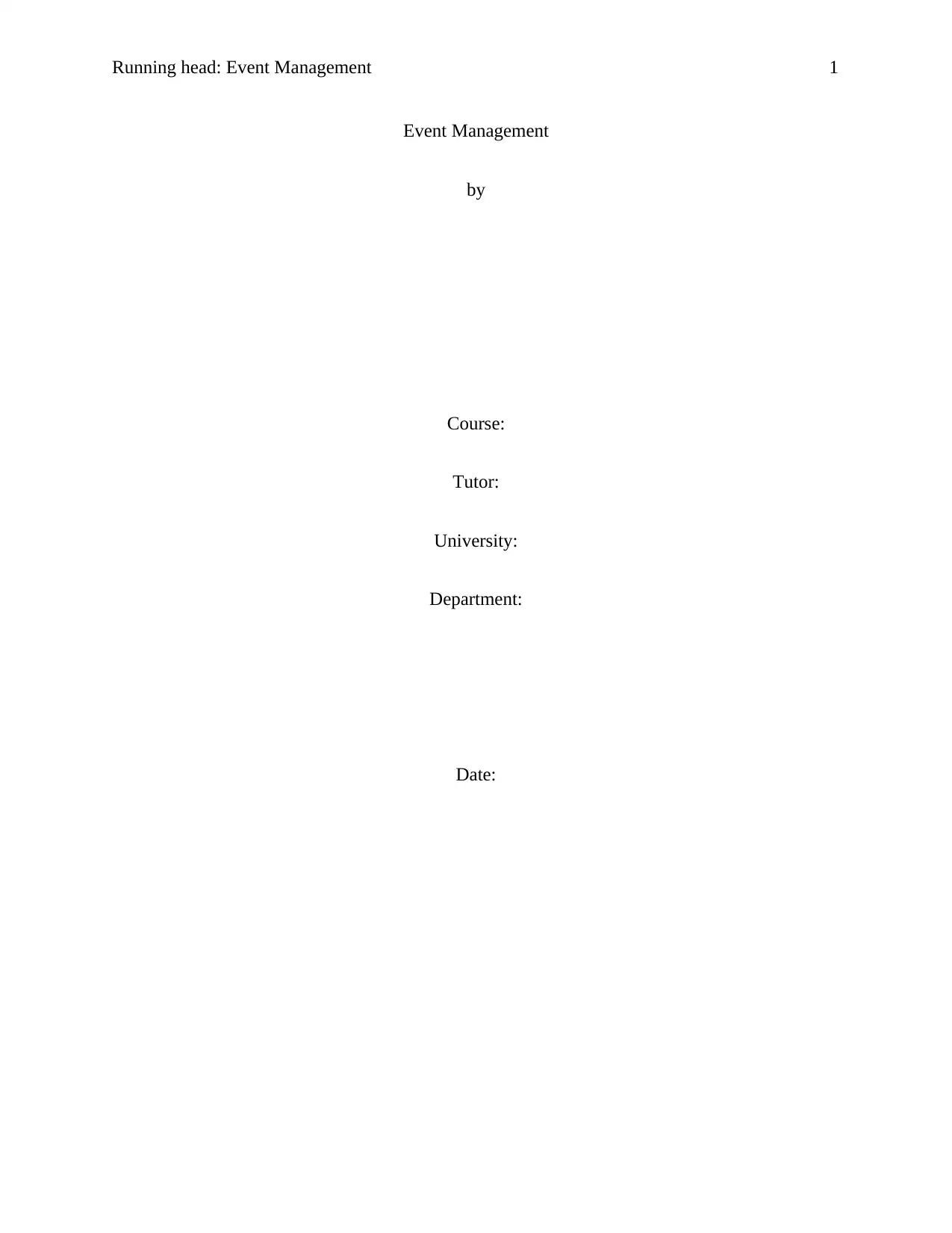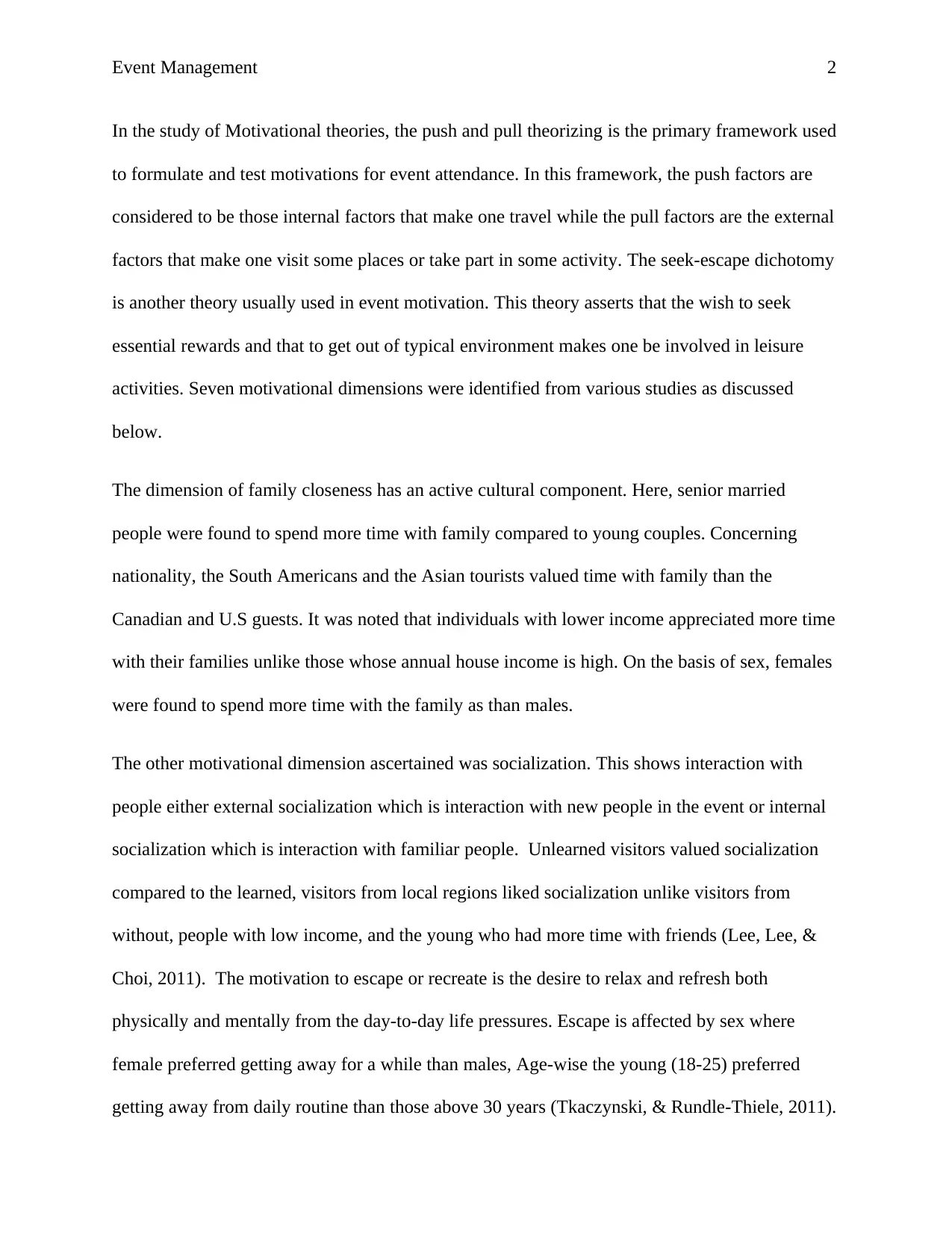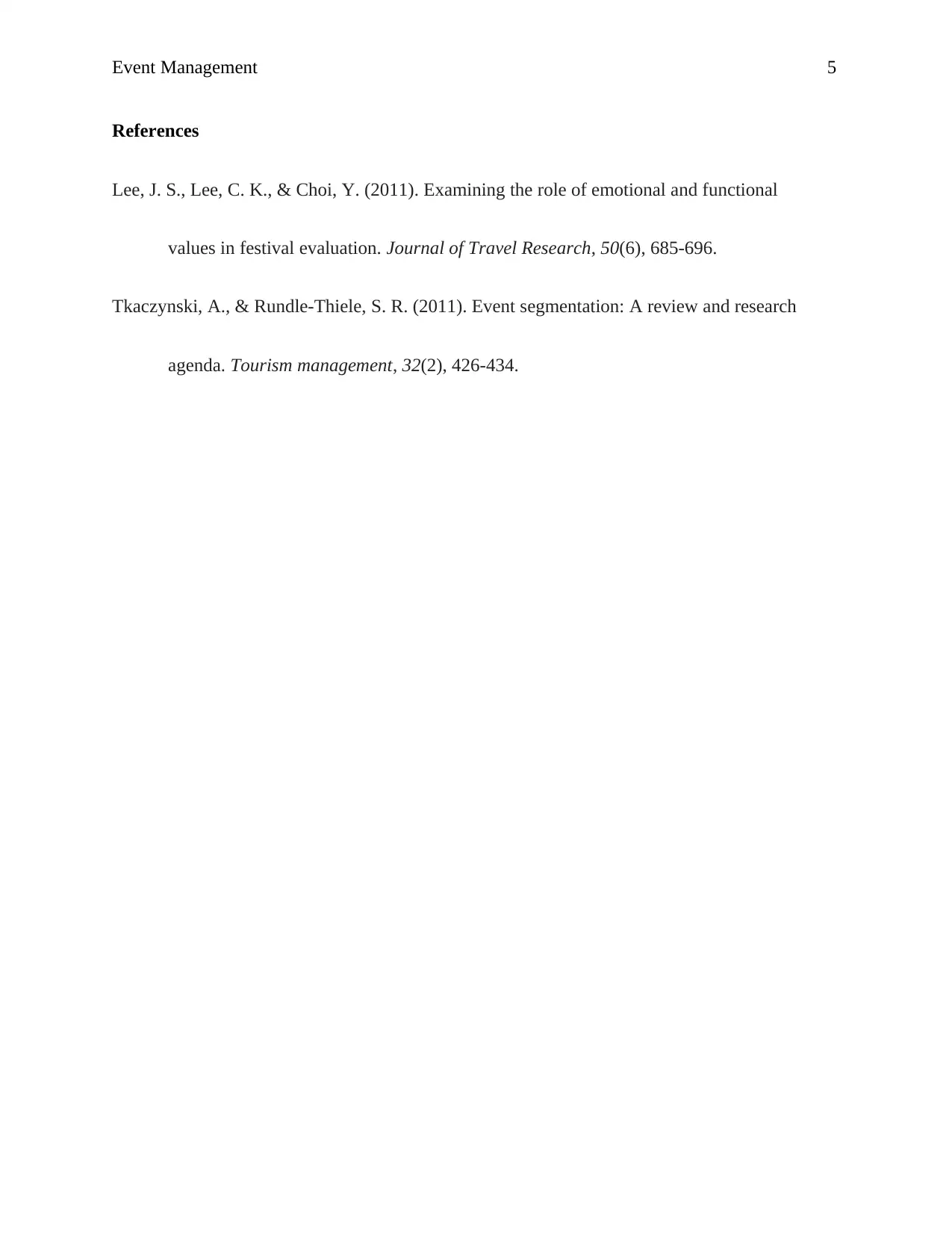Event Management: Analyzing Push-Pull Theories and Event Motivations
VerifiedAdded on 2021/04/21
|5
|793
|118
Report
AI Summary
This report provides an in-depth analysis of event management, focusing on motivational theories and dimensions that influence event attendance. It examines the push and pull theorizing framework, highlighting internal and external factors that drive participation. The study also explores the seek-escape dichotomy and identifies seven key motivational dimensions, including family closeness, socialization, escape/recreation, event newness, excitement and enjoyment, and cultural events. These dimensions are analyzed based on various demographic factors such as age, sex, nationality, and income. The report further investigates event-specific attributes and motivations behind attending music festivals, emphasizing the importance of value for money, accessibility, and information availability. The findings suggest that motivations vary across different event types and are influenced by a complex interplay of individual characteristics and event attributes. The report concludes by recommending further research on motivational diversity and data analysis methods within the field of event management.
1 out of 5








![[object Object]](/_next/static/media/star-bottom.7253800d.svg)